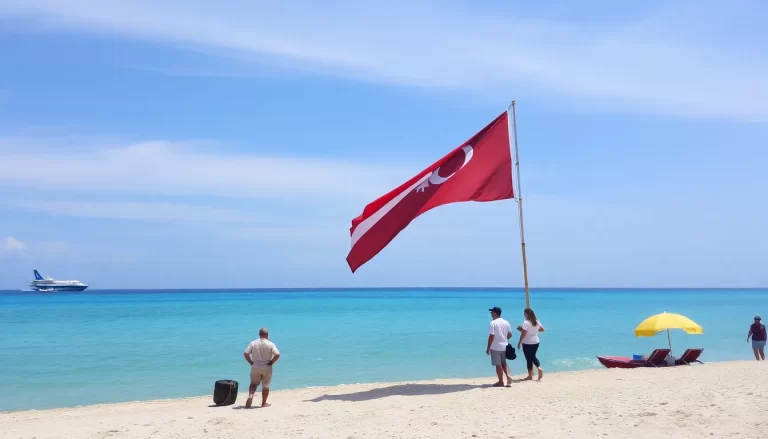Traveling to India for the first time can be a thrilling yet overwhelming experience. With a rich tapestry of culture, history, and landscapes, this diverse nation offers countless opportunities for exploration. To help you navigate this vibrant country, we’re sharing essential travel tips that can transform your journey into a seamless adventure.
Whether you’re drawn to the bustling streets of Delhi or the serene backwaters of Kerala, understanding how to approach travel in India will enhance your experience. So, let’s delve into the highlights of India and equip you with the knowledge you need for an unforgettable trip.
First trip to India: where to go
India is vast, and choosing where to go can be daunting for first-time visitors. Each region has its unique appeal, from the majestic palaces of Rajasthan to the spiritual serenity of Varanasi.
- Rajasthan: Known for its historical forts and vibrant culture, Rajasthan is a must-visit. Explore cities like Jaipur, Udaipur, and Jodhpur for a glimpse into royal India.
- Kerala: Famous for its backwaters and lush landscapes, Kerala offers a tranquil escape. Enjoy houseboat rides and savor delicious South Indian cuisine.
- Agra: Home to the iconic Taj Mahal, Agra draws millions of visitors. Make sure to see the monument at sunrise for a breathtaking view.
- Goa: Known for its beaches and nightlife, Goa is ideal for those seeking relaxation and fun in the sun.
- Himachal Pradesh: For nature lovers, the Himalayan region offers stunning trekking opportunities and beautiful landscapes.
Travel tips for India: packing essentials
Packing for India requires careful consideration due to its diverse climates and cultures. Here are some essentials to bring:
- Clothing: Lightweight, breathable fabrics are ideal given the heat. Modest clothing is advised, especially in rural areas and religious sites.
- Footwear: Comfortable shoes are a must for exploring cities and nature. Consider sandals for hot weather and sturdy shoes for trekking.
- Travel first aid kit: Include medications for common ailments, insect repellent, and sunscreen.
- Power adapters: India uses Type C, D, and M plugs, so bringing a universal adapter is wise.
- Reusable water bottle: Staying hydrated is crucial. Use a water filter or purifying tablets to ensure safe drinking water.
India travel guide for foreigners
Understanding the cultural norms and etiquette in India is vital for a respectful and enjoyable visit. Here are some key points to keep in mind:
- Greetings: A polite greeting is customary. Use «Namaste» with palms together as a sign of respect.
- Respect for religion: India is home to many religions. Dress modestly when visiting temples and respect local customs.
- Dining etiquette: It’s common to eat with your hands in certain regions. Always use the right hand, as the left is considered unclean.
- Photography: Always ask for permission before taking photos of individuals, especially in rural areas.
- Bargaining: Haggling is common in markets. Start negotiations at about half the asking price.
Is it safe to travel to India right now?
Safety is a common concern for travelers, especially women. While India has its challenges, many travelers report positive experiences. Here are some safety tips:
- Stay aware: Be conscious of your surroundings, especially in crowded areas.
- Travel in groups: Whenever possible, travel with friends or in a group, especially at night.
- Use trusted transportation: Opt for reputable taxi services or rideshare apps rather than accepting rides from strangers.
- Emergency contacts: Keep a list of local emergency contacts and tourist helplines handy.
- Research destinations: Before traveling to remote areas, ensure they are safe and accessible.
What do I need to know before traveling to India?
Preparation is key to enjoying your trip to India. Here are some important considerations:
- Visa requirements: Most travelers need a visa to enter India. Check the latest regulations and apply ahead of time.
- Currency: The Indian Rupee (INR) is the official currency. Familiarize yourself with currency exchange rates before your trip.
- Language: Hindi and English are widely spoken, but learning a few basic phrases in Hindi can be helpful.
- Health precautions: Consult your doctor about vaccinations and medications before your trip.
- Internet access: Wi-Fi is available in many urban areas but can be spotty in rural locations. Consider getting a local SIM card.
Do’s and don’ts in India
Understanding the do’s and don’ts can prevent cultural misunderstandings. Here’s a quick guide:
- Do: Be polite and respectful. Use «please» and «thank you» often.
- Don’t: Disrespect local customs or traditions, especially in religious settings.
- Do: Try local foods and beverages; they are part of the cultural experience.
- Don’t: Engage in public displays of affection; it’s generally frowned upon.
- Do: Use your right hand for eating, greeting, and handing over items.
How to avoid getting sick when traveling in India
Food and water safety are crucial for health during your travels. Here are tips to minimize the risk of illness:
- Drink safe water: Always drink bottled or filtered water.
- Avoid street food: While tempting, street food can sometimes lead to stomach issues.
- Wash hands frequently: Keeping your hands clean can reduce the risk of illness.
- Eat cooked food: Ensure food is freshly prepared and hot when served.
- Be cautious with dairy: Dairy products can be risky unless you’re sure of their freshness.
Travel tips from other travelers
Online platforms like Reddit and travel forums offer invaluable insights from fellow travelers. Here are some popular tips shared by others:
- Plan your itinerary: It’s helpful to have a flexible plan but leave time for spontaneous adventures.
- Learn basic Hindi phrases: Locals appreciate when foreigners make an effort to communicate in their language.
- Stay connected: Use apps like WhatsApp to keep in touch with family and friends back home.
- Embrace the chaos: Accept that things may not go as planned; sometimes the unexpected leads to the best experiences.
- Make friends: Engaging with locals can enrich your travel experience significantly.
Follow the seasons: best times to visit
India’s climate varies greatly across regions, affecting travel plans. Here’s a breakdown of the seasons:
- Winter (December to February): Ideal for northern India, with cool weather perfect for sightseeing.
- Spring (March to May): Warm temperatures make it great for exploring, especially in the hills.
- Monsoon (June to September): Heavy rains can disrupt travel but also transform landscapes. Consider visiting during the early monsoon for lush scenery.
- Autumn (October to November): Festivals abound, making this a vibrant time to visit.
Visit attractions in the morning
Exploring popular destinations early can enhance your experience. Here’s why:
- Fewer crowds: Tourist spots are generally less crowded in the morning.
- Cooler temperatures: Morning hours often offer a more pleasant climate for outdoor activities.
- Better photography: The soft morning light is ideal for capturing stunning photographs.
- Local activities: Early hours can reveal local life and culture waking up.
Head into the countryside
While cities are bustling with activity, the countryside offers a contrasting experience. Here’s what to look for:
- Nature reserves: Explore India’s rich biodiversity in its numerous national parks and wildlife sanctuaries.
- Cultural immersion: Visit rural villages to experience traditional Indian lifestyles.
- Adventure activities: Engage in trekking, camping, and bird-watching in scenic locations.
- Local markets: Discover authentic handicrafts and support local artisans.
Traveling to India is not just a journey; it’s an immersion into a world of colors, flavors, and experiences that can be life-changing. By following these tips and being open to the unexpected, your first trip to India can be unforgettable. Embrace the adventure, and you may find yourself enchanted by this incredible country, just as countless others have before you.







